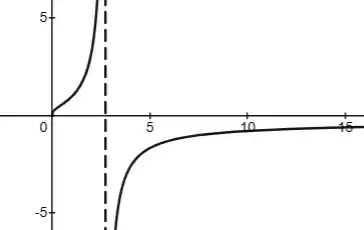I prepare high school students for their Oxford University math interview. There is a list of $99$ interview questions that has been floating around the internet for years. Presumably these questions were posted by students after their interviews.
Many students have asked me about Question #15: "Integrate $\frac{1}{1-\ln x}$". This integral cannot be expressed in terms of elementary functions, so it is probably not suitable for high school students.
Naturally, we wonder why this question appears on the list. Maybe the original question was a definite integral, and the student who posted it thought that they had to do the indefinite integral first. (There are countless examples of integrals that can be done definitely but not indefinitely.)
So my question is:
Are there are two different real numbers $a$ and $b$, expressed in closed form, so that $\int_a^b \frac{1}{1-\ln x}\mathrm dx$ has a closed form?
My attempt
Here is the graph of $y=\frac{1}{1-\ln x}$.
I don't know any method other than trial and error. I've plugged into Wolfram various $(a,b)$ without success: $(0,1), (0,\frac{1}{e}), (0,\sqrt{e}), (e^2, e^3)$, etc.

$$ \int_a^{b} \frac{1}{1 - \log x} dx = \int_{\log a}^{\log b} \frac{e^x}{1 - x} dx = \sum_{k \ge 0} \sum_{m \ge 0} \int_{\log a}^{\log b} \frac{x^{m + k}}{k!} dx $$. For symmetric parts ($e^{-1}$ and $e$ f.e.) we can notice that most of the parts eliminate.
– openspace Nov 17 '23 at 09:26